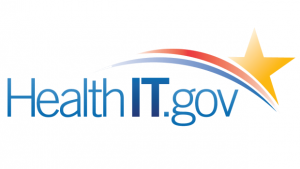As the flow of healthcare data has increased and found its way into patient hands courtesy of changing policies and increased technological capability, a new question has arisen; is it useful?
Like many patients, you can probably log into a patient portal from your healthcare provider and gain access to your electronic medical record, but what you may find is poorly organized lines of data and information that fails to tell a story.
Patient Portal Problems
A commonly touted tool for patient engagement and education at the outset, patient portals have become known for being difficult to use, having inconsistent approaches to UI/UX and being difficult to read.
Merely opening up the EMR to patients is not enough to help drive the consumer-focused trends and patient engagement necessary to support the value-based approach the industry is targeting. Instead, providers should look to communicate via platforms that the patient already uses to ensure regular contact with patients outside of the hospital.
Additionally, historical information is not necessarily useful. A patient’s health is a big picture to see, even for them. Historical snapshots of past events tend to leave out important information or mitigating circumstances that were clear at the time but may have changed since.
For patients currently in the hospital, the portal has had very little functionality and thus, done little to improve outcomes. Research from the Journal of the American Medical Informatics Association (JAMIA) shows that use of patient portals to engage patients in the inpatient setting had little effect on hospital outcomes. And it’s not a surprise to some, like Healthloop CEO, Todd Johnson.
“Simply blasting test results and appointment reminders to patients or asking them to fill out generic surveys that aren’t tailored to their specific situation won’t impact outcomes,” Johnson wrote in an article for MedCity News. “To achieve better outcomes and improve patient satisfaction and loyalty, providers must use technology that will facilitate continuous dialogue with patients utilizing personalized content and an empathetic tone.”
Fixing Readability
For patients with chronic conditions, the problem of simply turning over their medical records becomes even more complex. While getting their records may be easy, sifting through the mounds of information that regular patient visits create is anything but.
A patient named Anne Zieger recently penned an article for Healthcare IT Today in which she outlined the state of her 643-page medical record. Events lacked chronology while others were extremely repetitive or were confusing to understand where they coming from, be it a specialist, a nurse or physician.
“If you think the average individual has the time, expertise, energy and context to fish out valuable information from this flood of words, you’re nuts,” she wrote. “Even among my coterie of medically-informed, educated patients with complex care to manage, my guess is that the vast majority of them would roll their eyes and give up if they had to take on a document this size even once, much less on an ongoing basis.”
This is to say nothing of issues surrounding the readability of EHR notes from physicians. Often, patients struggle to translate medical jargon into more relatable terms that they can use to fuel decisions about their care.
In the end, if the industry is going to make the most of the data it collects and the tools patients use to connect to that data, developers need to design a user experience that takes into account the fact that users want to read and understand the content within these records so that they can make decisions to improve their health. If that is not a central theme of what is being offered, then patient portals and EHRs will continue to do very little to drive patient engagement or improve outcomes on a large scale.



